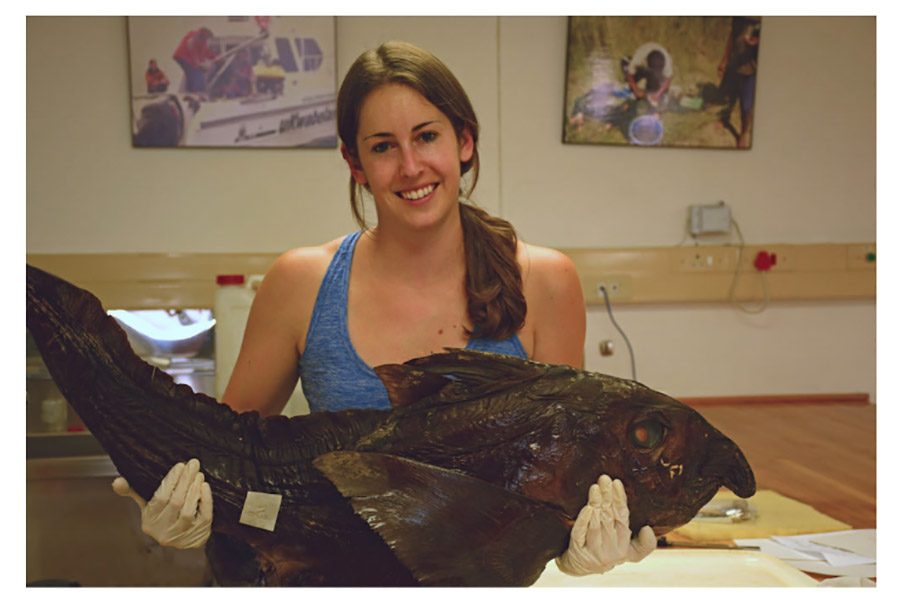Scientists discover new species of shark
Deep down in the dark depths of the oceans surrounding the coasts of South Africa, lies the newly found Bucktoothed Ghost Shark. The shark swam around harmlessly and undetected until being lured in by the food bait on the shiny hook of the fishermen, who were catching fish to sell in their markets. Reeling in the three foot sized bucktoothed ghost shark, the fisherman were extremely surprised to see an aquatic animal they did not recognize. Setting it in the boat and taking the shark to shore were just the first few steps of the ghost shark’s shocking discovery.
This recent encounter and recording of the strange species of shark makes it the 50th ever to be recorded, making it a bit of a celebration. The bucktoothed ghost shark, nearing three feet in length, or about half the size of an average household refrigerator, is the second largest of the ghost shark species to be documented and studied.
“Ghost sharks in general have a pretty big head and their body tapers to a thinner tail,” Kristin Walovich, a graduate student at the Pacific Shark Research Center at the Moss Landing Marine Laboratories in California, and the lead researcher of a new study said. “This one was really chunky in the front, and just a big bulky specimen.”
The bucktoothed ghost shark is quite an odd looking type of shark. It has a pointy nose, with rabbit-like teeth and a bulky looking head. The shark is pretty big and is dark color in order to blend in with the sea floor. The ghost shark uses its large pectoral fins, located on both sides of their bodies, to propel themselves forward. Its rabbit-like teeth are bucked, giving scientists the idea for the shark to be named, “bucktoothed ghost shark”. In the genus, the bucktoothed ghost shark’s official written name is Hydrolagus. Hydrolagus translates to “water rabbit” or “water hare.” In Greek, “hydro” means “water” and “lagus” means “rabbit” or “hare.” This special name was given to the freshly discovered ghost shark species to honor Robin Leslie of the South African Department of Agriculture, Forestry, and Fisheries, who helped others study the ghost shark.
Despite their names, ghost sharks aren’t actually sharks. Rather, the cartilaginous fish are relatives of sharks and rays. She noted that while sharks swim by moving their tails and rays literally “fly” underwater, ghost sharks use their pectoral fins to swim. Scientists also call ghost sharks chimaeras or ratfishes. Most chimaeras live in the deep sea, so researchers know little about their behavior, for example, how often they reproduce. Scientists hope to fully understand everything about the bucktoothed ghost shark, along with other species of shark one day.



